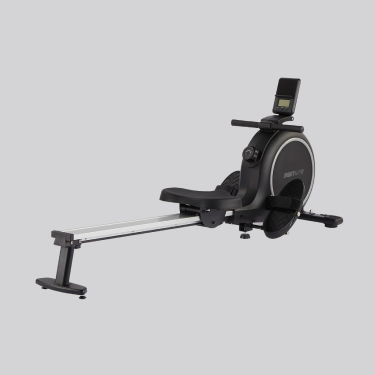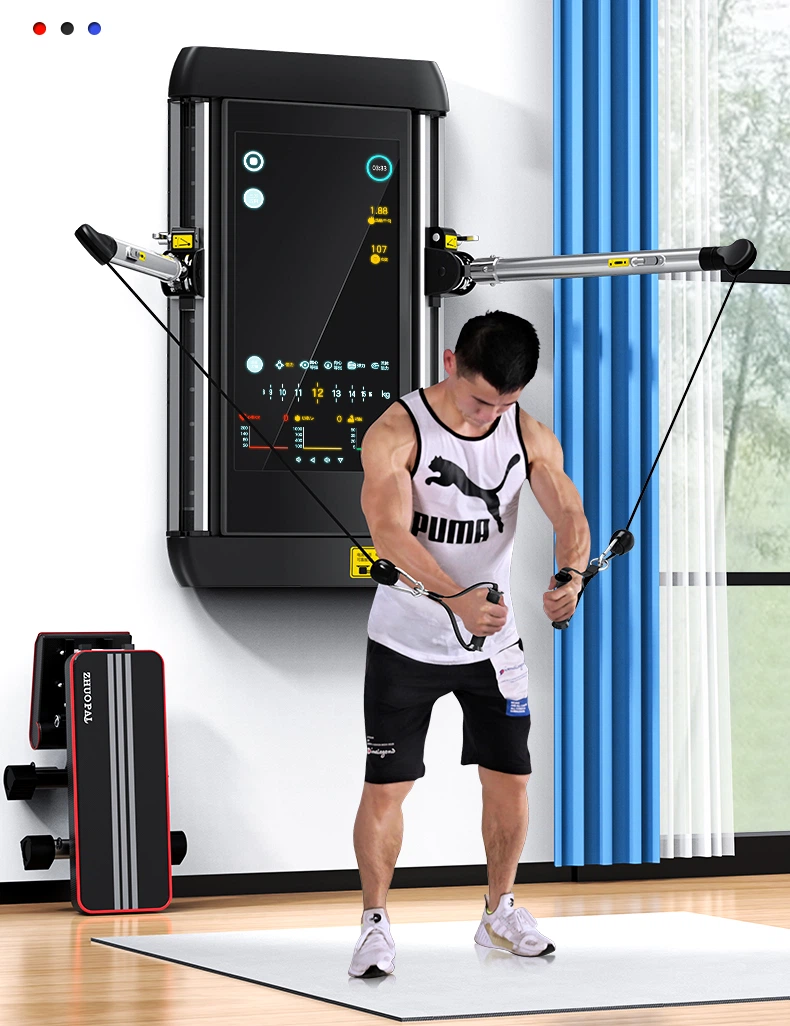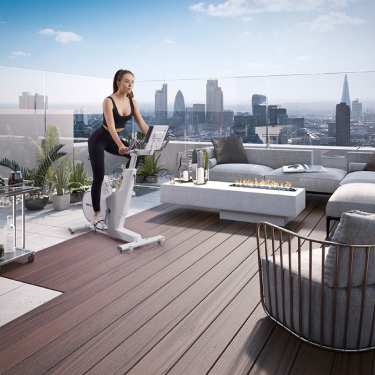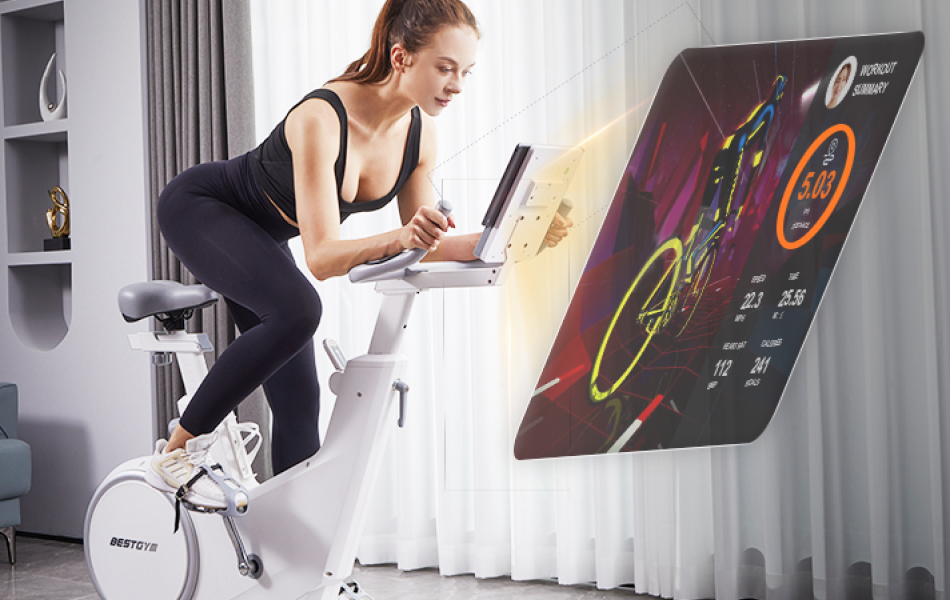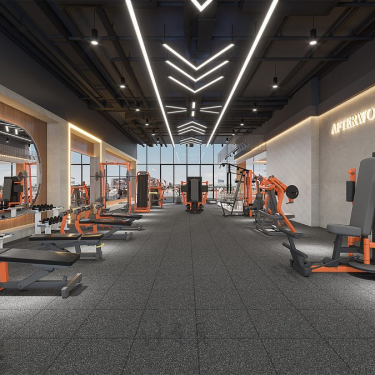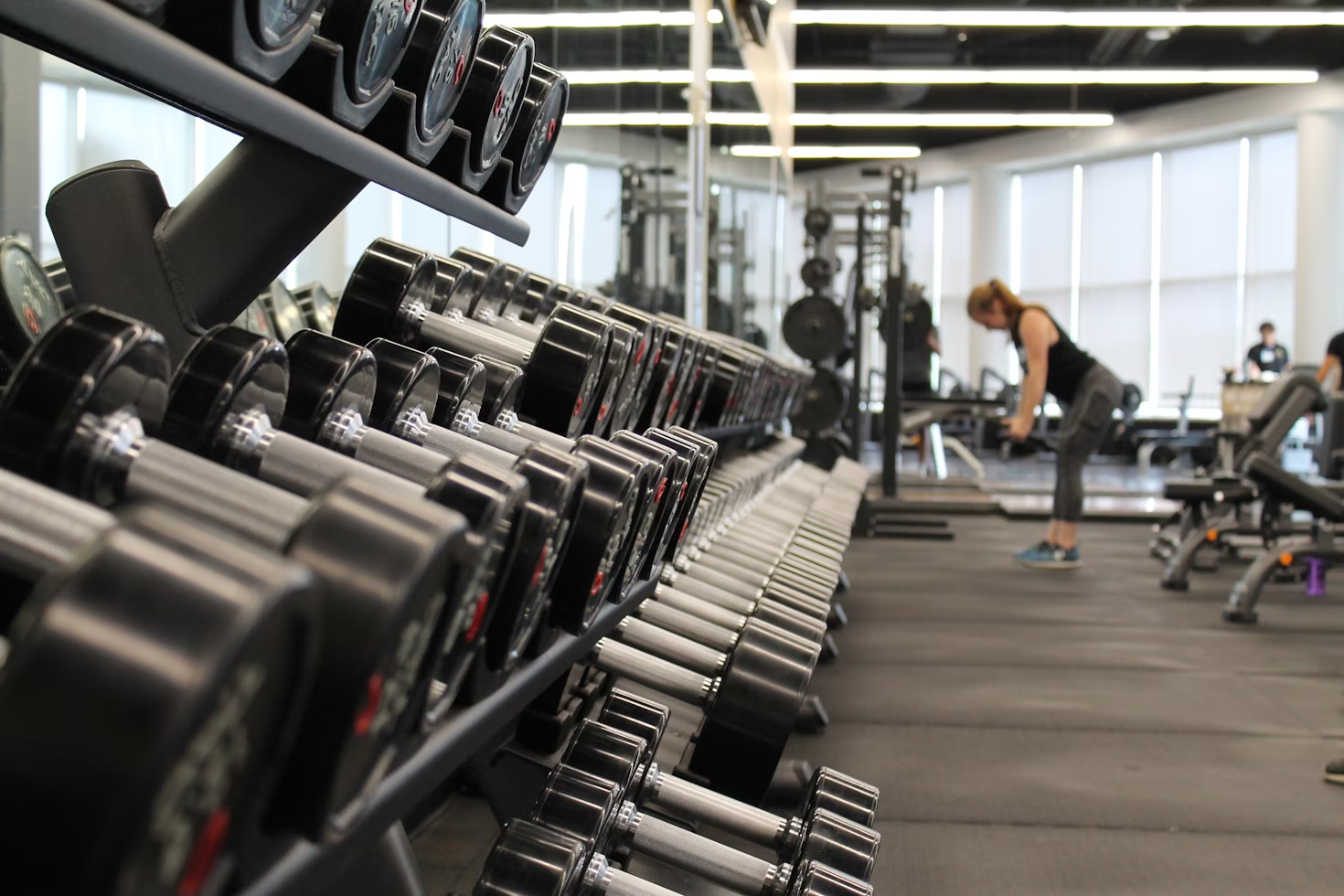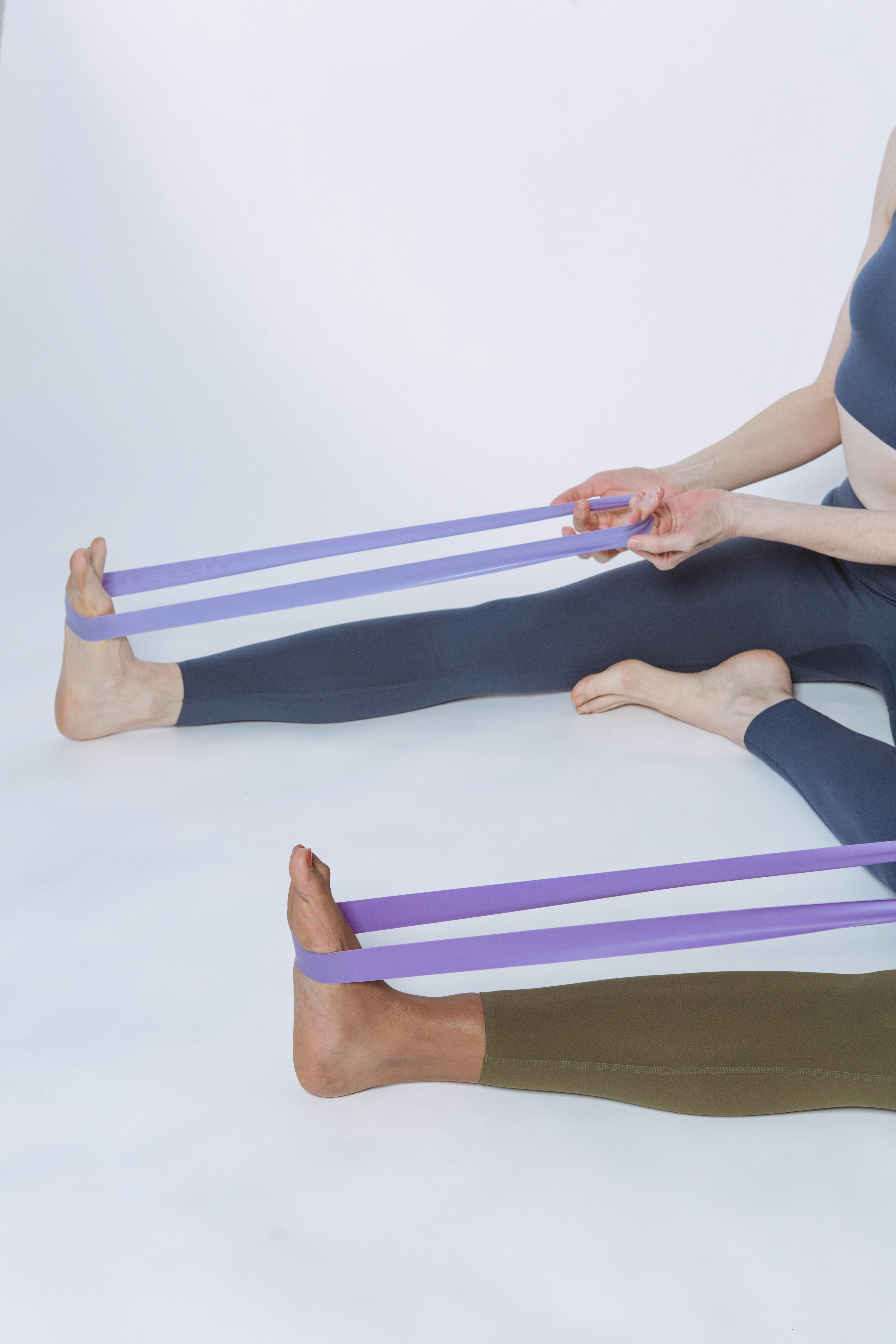Top 10 Exercise Bike Benefits & Tips: Why Start Pedaling Today
Exercise bikes are a popular choice for fitness enthusiasts due to their versatility and numerous health benefits. Whether you're a beginner or an experienced athlete, a good quality stationary bike can enhance your fitness routine in multiple ways. This article will explore the top 10 exercise bike benefits and provide tips on how to use them effectively. We'll cover a range of perspectives, including health, rehabilitation, daily life, athletic performance, home fitness, technology, sustainability, community, personal growth and economic benefits.
Top 10 Exercise Bike Benefits: Why You Should Start Pedaling Today
Whether you’re looking to improve your cardiovascular health, lose weight, or simply stay active, an exercise bike or air bicycle can be an invaluable addition to your fitness routine. In this part, we’ll explore different exercise bike benefits from 10 perspectives, including health and wellness, rehabilitation and physical therapy, daily life and time management, athletic performance and training, home fitness, technology and equipment, sustainability and environmental impact, community and social connection, personal growth and goal setting, economic benefits. 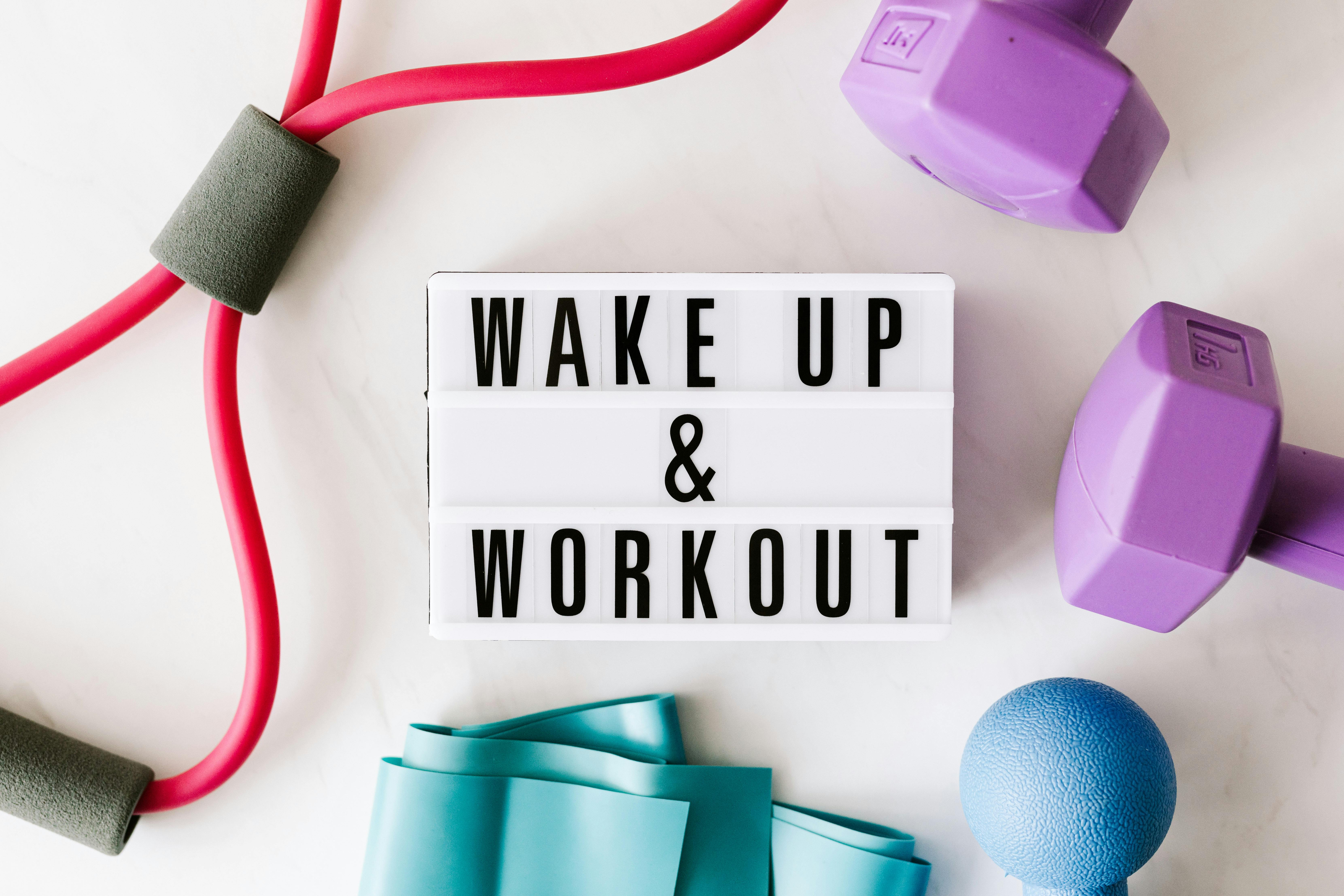
1. Boost Your Health and Wellness with Exercise Bike Benefits
Using an exercise bike is a fantastic way to enhance your overall health and wellness. Regular cycling strengthens your heart, increases lung capacity, and improves blood circulation, all of which are crucial for maintaining good cardiovascular health. Additionally, it aids in weight management, regulates blood sugar levels, and boosts your metabolism, contributing to a healthier lifestyle. Incorporating exercise bike workouts into your routine can significantly improve both your physical and mental well-being.
Exercise Bike Benefits for Overall Health
Exercise bikes are excellent for improving cardiovascular health. Regular cycling strengthens the heart, increases lung capacity, and improves circulation. This can significantly reduce the risk of heart disease, stroke, and hypertension. Additionally, cycling boosts metabolism and helps regulate blood sugar levels, making it beneficial for managing diabetes.
Exercise Bike Helps with What in Health
Cycling also supports weight loss by burning calories efficiently. A 30-minute moderate-intensity session can burn between 200-300 calories. Over time, this contributes to weight management and reduces the risk of obesity-related conditions.
To maximize health benefits, aim for at least 150 minutes of moderate-intensity or 75 minutes of high-intensity cycling each week. Incorporate interval training to keep your workouts varied and challenging.
2. Rehabilitation and Physical Therapy: How Exercise Bikes Aid Recovery
Exercise bikes with movable arms are invaluable tools in rehabilitation and physical therapy. They provide a low-impact workout that is gentle on the joints, making them ideal for individuals recovering from injuries or surgeries. Cycling helps improve joint mobility, rebuild muscle strength, and enhance overall endurance without causing additional strain. Whether you're dealing with arthritis, recovering from surgery, or managing a chronic condition, an exercise bike can help you safely and effectively regain your strength and flexibility.
Exercise Bike Benefits for Rehabilitation
Exercise bikes provide a low-impact workout, which is gentle on the joints and ideal for rehabilitation. They help improve joint mobility, rebuild muscle strength, and enhance endurance without putting excessive strain on the body.
Exercise Bike Helps with What in Physical Therapy
Cycling can aid recovery from injuries such as knee or hip replacements, as well as chronic conditions like arthritis. The controlled, smooth motion helps improve flexibility and reduces stiffness.
Start with low resistance and short sessions, gradually increasing as your strength and mobility improve. Consult with a physical therapist to create a tailored rehabilitation plan.
3. Maximize Daily Life and Time Management with Exercise Bikes
Exercise bikes offer unmatched convenience and flexibility, making it easier to incorporate regular exercise into your busy daily life. Whether you're a busy professional, a parent, or someone with a hectic schedule, having an exercise bike at home allows you to work out whenever it fits your routine. This flexibility helps you stay consistent with your fitness goals without the need to travel to a gym. By integrating short, effective workouts into your day, you can enhance your time management and maintain an active lifestyle.
Exercise Bike Benefits for Busy Lifestyles
Exercise bikes offer convenience and flexibility, making it easier to incorporate exercise into a busy schedule. They can be used at any time of day, regardless of weather conditions, eliminating common barriers to regular exercise.
Exercise Bike Helps with What in Daily Life
For those with tight schedules, having an exercise bike at home means you can fit in quick workouts during breaks or while watching TV. This flexibility promotes consistency and helps maintain an active lifestyle.
Set up your bike in a convenient location and establish a routine that fits your schedule. Even 10-15 minute sessions throughout the day can be beneficial. Use apps or virtual classes to stay motivated.
4. Enhance Athletic Performance and Training with Exercise Bikes
Athletes can significantly benefit from incorporating exercise bike workouts into their training regimens. Regular cycling builds endurance, improves cardiovascular efficiency, and strengthens lower body muscles. It also serves as an excellent cross-training activity, reducing the risk of overuse injuries while improving overall athletic performance. Whether you're a runner, swimmer, or team sport athlete, using an exercise bike can help you enhance your stamina, speed, and agility.
Exercise Bike Benefits for Athletes
Athletes can significantly benefit from using an exercise bike. It helps build endurance, improve cardiovascular efficiency, and strengthen lower body muscles. Cycling also serves as an excellent cross-training activity, reducing the risk of overuse injuries.
Exercise Bike Helps with What in Athletic Training
Incorporating cycling into an athlete's training regimen can enhance performance in sports that require cardiovascular fitness, such as running, swimming, and team sports. Interval training on the bike can simulate race conditions and improve speed and agility.
Athletes should vary their workouts, including steady-state rides, interval training, and hill climbs. Track progress and adjust intensity based on training goals and performance metrics.
5. Create an Effective Home Fitness Routine with Exercise Bikes
Exercise bikes are perfect for home fitness, providing a comprehensive workout without taking up too much space. They are user-friendly and cater to all fitness levels, making them an ideal addition to any home gym. With an exercise bike, you can achieve a full-body workout, improve your cardiovascular health, and manage your weight effectively. Setting up a dedicated exercise space at home with a bike can make it easier to maintain a consistent fitness routine. 
Exercise Bike Benefits for Home Gyms
Exercise bikes are a perfect addition to home gyms. They are compact, easy to use, and provide a full-body workout. This makes them a cost-effective option for those looking to stay fit without a gym membership.
Exercise Bike Helps with What in Home Fitness
Having an exercise bike at home encourages regular use and makes it easier to adhere to a fitness routine. It also offers a safe and private environment for workouts.
Designate a space in your home for your exercise bike. Set fitness goals and track your progress. Use virtual cycling apps to participate in online classes or scenic rides to keep your workouts interesting.
6. Embrace Technology and Equipment for Enhanced Cycling Workouts
Modern exercise bikes are equipped with advanced technology that enhances the workout experience. Features like digital displays, heart rate monitors, and connectivity to fitness apps provide valuable data and keep you engaged. These technological advancements allow you to track your progress, follow structured workout programs, and participate in virtual cycling classes. By leveraging these tools, you can make your workouts more effective and enjoyable.
Exercise Bike Benefits with Technology
Modern exercise bikes come equipped with advanced technology, including digital displays, heart rate monitors, and connectivity to fitness apps. These features enhance the workout experience and provide valuable data for tracking progress.
Exercise Bike Helps with What in Tech-Enhanced Workouts
Fitness apps can offer personalized workout plans, virtual classes, and community challenges, keeping you motivated and engaged. Some bikes also offer VR cycling experiences, simulating outdoor rides.
Utilize the bike's digital features to monitor your heart rate, calories burned, and distance traveled. Connect to fitness apps to follow structured workout programs and join online communities for added support.
7. Promote Sustainability and Environmental Impact with Exercise Bikes
Choosing to use an exercise bike is an eco-friendly way to stay fit and reduce your carbon footprint. Unlike driving to the gym or using motorized equipment, cycling at home is a greener alternative that supports a sustainable lifestyle. Some exercise bikes are even designed with energy-efficient features and sustainable materials. By incorporating cycling into your fitness routine, you contribute to environmental conservation and promote a healthier planet.
Exercise Bike Benefits for the Environment
Using an exercise bike is an eco-friendly way to stay fit. It reduces the need for driving to the gym, thus lowering your carbon footprint. Additionally, some bikes are designed with sustainable materials and energy-efficient features.
Exercise Bike Helps with What in Sustainability
Choosing to cycle at home over commuting to a gym or using motorized equipment contributes to a greener lifestyle. It's a small step towards reducing environmental impact and promoting sustainability.
Opt for energy-efficient models and incorporate cycling into your daily routine as a primary form of exercise. Encourage family members to use the bike as well, promoting an eco-friendly household.
8. Build Community and Social Connection Through Cycling
Exercise bikes offer opportunities to connect with others through virtual cycling classes and online communities. Sharing your fitness journey, challenges, and achievements with like-minded individuals can enhance your motivation and provide a sense of belonging. Participating in group rides, challenges, and events can make your workouts more enjoyable and help you build meaningful social connections.
Exercise Bike Benefits for Social Interaction
Participating in virtual cycling classes or joining online cycling communities can enhance your social life. Sharing your progress, challenges, and achievements with others fosters a sense of community and support.
Exercise Bike Helps with What in Building Connections
Cycling with others, even virtually, can make workouts more enjoyable and provide accountability. It also opens opportunities for friendly competition and shared fitness goals.
Join virtual cycling platforms or local cycling groups. Participate in community challenges and events to stay motivated and connected with like-minded individuals.
9. Achieve Personal Growth and Goal Setting with Exercise Bikes
Using an exercise bike can significantly contribute to your personal growth and help you achieve your fitness goals. Setting and accomplishing specific cycling milestones boosts your confidence and fosters a sense of achievement. Regularly tracking your progress and setting new goals encourages discipline and perseverance, which are essential for long-term success. By focusing on personal growth through cycling, you can develop a healthier, more motivated mindset.
Exercise Bike Benefits for Personal Development
Setting and achieving fitness goals using an exercise bike can boost your confidence and sense of accomplishment. It encourages discipline, perseverance, and a proactive approach to health.
Exercise Bike Helps with What in Goal Achievement
Regularly using an exercise bike helps in tracking progress, setting new milestones, and celebrating achievements. This process contributes to personal growth and a positive mindset.
Set specific, measurable, achievable, relevant, and time-bound (SMART) goals. Use the bike's tracking features to monitor your progress and adjust your goals as you advance.
10. Enjoy Economic Benefits of Home Exercise Bikes
Investing in an exercise bike can lead to substantial economic benefits. It eliminates the need for a gym membership and reduces transportation costs, offering a cost-effective solution for staying fit. Over time, the initial investment in a high-quality exercise bike is outweighed by the savings on gym fees and travel expenses. Additionally, the convenience of working out at home adds value by saving you time and money in the long run.
Exercise Bike Benefits for Cost Savings
Investing in an exercise bike can save money in the long run by eliminating the need for a gym membership and reducing transportation costs. It's a one-time investment that offers continuous benefits.
Exercise Bike Helps with What in Financial Savings
Over time, the cost of an exercise bike is outweighed by the savings from gym fees and travel expenses. It also provides the convenience of working out at home, which can be a significant time saver.
Choose a bike that fits your budget and fitness needs. Regular maintenance will ensure its longevity, maximizing your investment. Compare the long-term costs of owning an exercise bike to other fitness alternatives.
Best 10 Tips for Usage: How to Use an Exercise Bike Effectively
Using an magnetic fitness bike effectively can help you maximize the benefits of your workouts, improve your fitness levels, and stay motivated. Here are ten detailed tips to help you get the most out of your exercise bike sessions: 
1. Adjust the Bike Properly
Before starting your workout, ensure that your exercise bike is adjusted to fit your body correctly. Adjust the seat height so that your legs are almost fully extended when the pedals are at their lowest point. The handlebars should be at a comfortable height to avoid straining your back and shoulders.
2. Warm Up Before Cycling
A proper warm-up is essential to prepare your body for exercise and prevent injuries. Spend 5-10 minutes pedaling at a low resistance to increase your heart rate and loosen up your muscles. This will help you perform better during the main workout and reduce the risk of muscle strains.
3. Set Clear Goals
Having specific goals can keep you motivated and focused. Whether your goal is to improve cardiovascular health, lose weight, or increase endurance, set measurable and achievable targets. For example, aim to cycle for a certain number of minutes, burn a specific number of calories, or complete a particular distance.
4. Use Proper Form
Maintaining proper form is crucial for an effective and safe workout. Keep your back straight, shoulders relaxed, and grip the handlebars lightly. Ensure that your knees are aligned with your feet and not splaying outwards. Proper form helps prevent injuries and ensures you’re working the right muscle groups.
5. Incorporate Interval Training
Interval training involves alternating between periods of high-intensity effort and low-intensity recovery. This type of workout can boost your cardiovascular fitness, increase calorie burn, and add variety to your routine. For example, pedal hard for 1-2 minutes, then reduce the intensity for 2-3 minutes, and repeat.
6. Monitor Your Heart Rate
Monitoring your heart rate can help you ensure that you’re working out at the right intensity. Use a heart rate monitor or the bike’s built-in sensors to stay within your target heart rate zone. For most people, this is 50-85% of their maximum heart rate, which can be calculated as 220 minus your age.
7. Stay Hydrated
Hydration is key to maintaining performance and preventing dehydration during your workout. Keep a water bottle within reach and take small sips regularly. Dehydration can lead to fatigue, decreased performance, and even health issues, so make sure to drink enough water before, during, and after your workout.
8. Vary Your Workouts
To prevent boredom and keep your workouts effective, vary your cycling routines. Mix up steady-state rides, interval training, hill climbs, and endurance rides. Changing the resistance and duration of your workouts can help target different muscle groups and improve overall fitness.
9. Cool Down and Stretch
After your workout, take 5-10 minutes to cool down by pedaling at a low resistance. This helps gradually lower your heart rate and prevents blood from pooling in your legs. Follow your cool-down with stretching exercises to improve flexibility and reduce muscle soreness.
10. Track Your Progress
Keeping track of your workouts can help you stay motivated and see your improvements over time. Use a fitness app, a journal, or the bike’s tracking features to record your sessions, including duration, distance, calories burned, and any other relevant metrics. Reviewing your progress can inspire you to set new goals and push yourself further.
By following these tips, you can ensure that you’re using your exercise bike effectively and safely, leading to better results and a more enjoyable workout experience. Whether you’re a beginner or a seasoned cyclist, these strategies can help you make the most of your time on the bike and achieve your fitness goals.
What Muscles Does an Exercise Bike Work? Discover the Benefits for Your Body
Using an exercise bike is an effective way to engage multiple muscle groups and improve your overall fitness, for example, magnetic spin bike. Here's a breakdown of the primary muscles targeted during an exercise bike workout:

1. Quadriceps
The quadriceps, located at the front of the thighs, are heavily engaged during cycling. These muscles work to extend your knee as you pedal, providing the power needed to push the pedals down. Consistent cycling can help strengthen and tone the quadriceps, contributing to improved leg strength and endurance.
2. Hamstrings
The hamstrings, found at the back of the thighs, play a crucial role in cycling by helping to flex the knee and extend the hip. As you pull the pedal back and up, the hamstrings are activated. Strengthening these muscles through regular cycling can enhance your overall leg power and balance the strength between the front and back of your thighs.
3. Glutes
The gluteal muscles, or glutes, are the muscles of your buttocks. These muscles are engaged every time you push down on the pedals. Strong glutes are essential for maintaining proper posture and providing stability, both on and off the bike. Cycling helps to tone and strengthen the glutes, contributing to better performance in various physical activities.
4. Calves
The calf muscles, including the gastrocnemius and soleus, are activated during the upward and downward pedal stroke. These muscles help to stabilize your ankles and provide the force needed to push the pedals. Regular cycling can help build and define the calves, improving both strength and endurance.
5. Hip Flexors
Hip flexors, which include muscles such as the iliopsoas, are involved in lifting the thighs during the upward phase of the pedal stroke. These muscles are crucial for maintaining a fluid and efficient pedaling motion. Strengthening the hip flexors through cycling can enhance your overall cycling efficiency and help prevent injuries.
6. Core Muscles
Although not as heavily engaged as the lower body muscles, the core muscles, including the abdominals and obliques, play a significant role in maintaining balance and stability while cycling. A strong core helps to support proper posture, reduces the risk of lower back pain, and improves overall cycling performance.
7. Upper Body Muscles
While cycling primarily targets the lower body, the upper body muscles, such as the biceps, triceps, and shoulders, are also engaged to a lesser extent. These muscles help to stabilize the handlebars and maintain proper riding form. Incorporating upper body strength training into your routine can complement your cycling workouts and promote overall muscular balance.
Exercise Bike Benefits FAQs
Are you considering integrating an exercise bike into your fitness routine but have some questions? Whether you're aiming to shed a few pounds, tone your muscles, or simply improve your overall health, using an exercise bike can be an excellent addition to your workout regimen. However, it's natural to have questions about its effectiveness, usage, and how to choose the right one for your needs. In this part, we'll address six common FAQs surrounding exercise bikes, providing comprehensive answers to help you make informed decisions and get the most out of your cycling experience.
1. Can You Get in Shape Just on a Stationary Bike?
Yes, you can definitely get in shape using a good stationary bikes. It's an effective cardiovascular exercise that targets various muscle groups, helping to improve endurance, strengthen leg muscles, and burn calories.
2. How Long Should You Use an Exercise Bike a Day to Lose Weight?
The duration of your workout on an exercise bike depends on various factors such as your fitness level, intensity of exercise, and weight loss goals. However, aiming for at least 30 minutes to an hour of moderate to vigorous cycling most days of the week can help you achieve weight loss results.
3. Can You Lose Belly Fat by Riding a Stationary Bike?
While spot reduction is not possible, cycling on a stationary bike can contribute to overall fat loss, including belly fat. Combining regular cycling with a balanced diet and other forms of exercise can help reduce excess fat throughout the body, including the abdominal area.
4. Is It Good to Use an Exercise Bike Every Day?
Using an exercise bike every day can be beneficial for cardiovascular health and overall fitness, but it's important to listen to your body and avoid overtraining. It's recommended to include rest days or alternate low-impact activities to prevent overuse injuries and allow for muscle recovery.
5. How to Choose the Right Exercise Bike for You?
When choosing an exercise bike, consider factors such as your budget, available space, desired features (such as resistance levels, pre-set programs, and heart rate monitoring), and comfort. Test different models to find one that fits your body size and exercise preferences.
6. How to Adjust the Bike to Your Height?
To adjust the exercise bike to your height, start by adjusting the seat height so that your knees are slightly bent at the bottom of the pedal stroke. Ensure that the handlebars are also at a comfortable height and distance from your body to maintain proper posture and avoid strain. Adjustments may vary depending on the specific model of the bike.
Conclusion: Understanding Your Fitness Journey with Exercise Bikes Benefits
Exercise bikes are versatile and effective fitness tools that offer numerous benefits for individuals of all fitness levels. In this comprehensive guide, we explored various aspects of using exercise bikes, including their impact on muscle development, weight loss potential, frequency of use, selection process, and proper adjustment techniques. Home gym manufacturers often highlight these benefits to showcase the value of their products, helping consumers make informed decisions about incorporating exercise bikes into their fitness routines.
Starting with an understanding of the muscles targeted during exercise bike workouts, we learned that cycling engages major muscle groups such as the quadriceps, hamstrings, glutes, calves, hip flexors, core muscles, and even the upper body. This full-body engagement makes exercise bikes an efficient choice for those looking to improve overall strength, endurance, and cardiovascular health.
Addressing common questions surrounding the weight loss potential of exercise bikes, we discussed the recommended duration of use per day to achieve weight loss goals. While there is no one-size-fits-all answer, aiming for at least 30 minutes to an hour of moderate to vigorous cycling most days of the week can contribute to weight loss efforts.
Furthermore, we tackled the misconception of spot reduction by clarifying that while cycling can help reduce overall body fat, including belly fat, it's essential to complement exercise with a balanced diet and other forms of physical activity for optimal results.
Delving into the frequency of exercise bike use, we emphasized the importance of listening to your body and incorporating rest days to prevent overtraining and promote muscle recovery. Consistency is key, but it's equally important to avoid excessive strain and allow time for the body to adapt and heal.
In the selection process, we highlighted factors to consider when choosing the right exercise bike for your needs, such as budget, available space, desired features, and comfort. Testing different models and adjusting the bike to your height and body proportions ensures a comfortable and effective workout experience.
In conclusion, integrating an exercise bike into your fitness routine offers a multitude of benefits, from improved cardiovascular health and muscle strength to weight loss and overall well-being. By understanding how to maximize the benefits of exercise bikes and addressing common concerns, you can embark on a fulfilling fitness journey and achieve your health and fitness goals. Whether you're a beginner or an experienced cyclist, the versatility and effectiveness of exercise bikes make them a valuable asset in any fitness arsenal.


